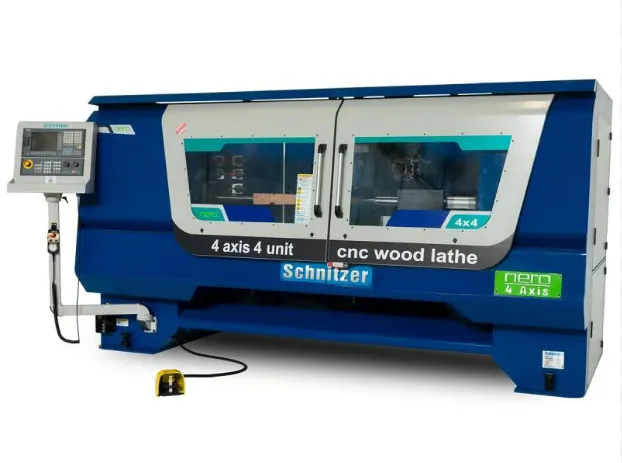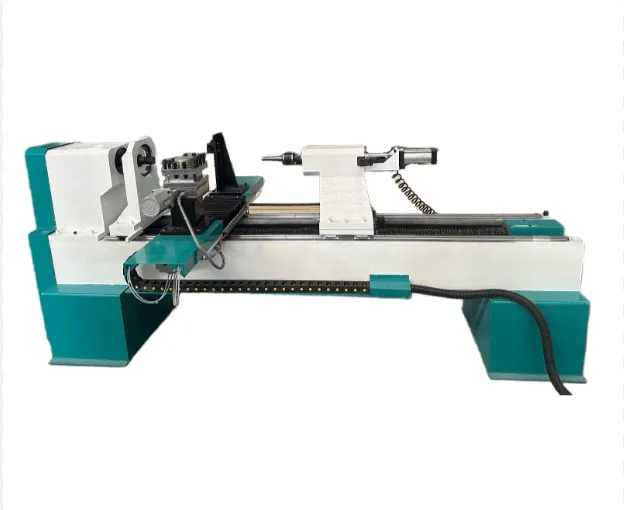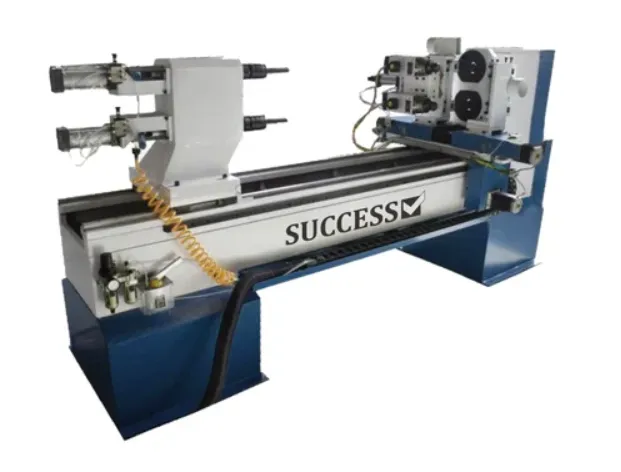The woodworking industry has undergone a quiet revolution with the widespread adoption of CNC wood lathes, machines that blend centuries-old turning techniques with cutting-edge digital control. These sophisticated systems now dominate high-end production shops, with industry reports indicating a 47% increase in CNC lathe installations for wood applications since 2018. The shift comes as manufacturers recognize the machines’ ability to maintain 0.1mm tolerances across production runs while handling everything from delicate musical instrument components to massive architectural columns.
 At the heart of modern CNC wood lathes lies a marriage of robust mechanical engineering and advanced software control. Current-generation machines like the SCM Morbidelli T200 employ 15HP vector-controlled spindles that deliver constant torque from 200 to 4,500 RPM, allowing operators to turn dense exotics like lignum vitae as easily as soft pine. The real magic happens in the motion control – servo-driven axes with 0.01mm resolution encoders work in concert with anti-vibration toolposts to produce surface finishes measuring 1.6μm Ra straight from the tool. This eliminates nearly all hand sanding for production items like furniture legs and stair parts.
At the heart of modern CNC wood lathes lies a marriage of robust mechanical engineering and advanced software control. Current-generation machines like the SCM Morbidelli T200 employ 15HP vector-controlled spindles that deliver constant torque from 200 to 4,500 RPM, allowing operators to turn dense exotics like lignum vitae as easily as soft pine. The real magic happens in the motion control – servo-driven axes with 0.01mm resolution encoders work in concert with anti-vibration toolposts to produce surface finishes measuring 1.6μm Ra straight from the tool. This eliminates nearly all hand sanding for production items like furniture legs and stair parts.

Material handling innovations have dramatically expanded what’s possible with CNC wood turning. The latest systems incorporate 3D scanning probes that map irregular blanks – whether natural-edge slabs or recycled timber – and automatically generate optimized toolpaths. One Massachusetts stair parts manufacturer reported a 35% reduction in material waste after implementing this technology. For high-volume production, robotic loading systems like those on the Biesse Selco WN2 series can process over 600 stair balusters per shift with zero operator intervention.

The architectural woodworking sector has particularly benefited from CNC lathe advancements. Custom millwork shops now routinely produce fluted columns up to 4 meters long with perfect period-accurate profiles. The secret lies in programmable steady rests that automatically adjust support pressure as the tool moves along the workpiece. A recent Smithsonian restoration project used this technology to recreate 19th century Corinthian capitals with 0.3mm profile accuracy – indistinguishable from hand-carved originals under close inspection.
Musical instrument makers have pushed CNC wood lathes to their precision limits. High-end guitar manufacturers now turn neck blanks to within 0.05mm of final dimensions before hand finishing. The Parker Guitars facility in Ohio runs five-axis CNC lathes that machine complete necks – including fretboard radius and headstock angles – in a single chucking. Their production manager notes the machines maintain critical neck pocket dimensions within 0.07mm, ensuring perfect fitment to guitar bodies.

Despite these advances, successful CNC wood turning requires careful attention to tooling and process parameters. Carbide insert tools with specialized geometries for wood now last 8-10 times longer than traditional high-speed steel in abrasive species like purpleheart. Dust extraction remains critical – leading systems like the Oneida Air Systems Dust Cobra pull 2,000 CFM directly from the cutting zone, preserving bearing life and preventing finish contamination.
Emerging technologies promise to further transform the field. Several European manufacturers are testing AI-assisted toolpath generation that automatically adjusts feeds and speeds based on real-time vibration analysis. Early adopters report 22% faster cycle times in figured maple with no increase in tear-out. Another frontier involves hybrid additive-subtractive systems – Italian firm CMS recently demonstrated a prototype that can 3D print wood-composite materials then precision-turn them in the same setup.

As digital fabrication continues evolving, CNC wood lathes stand poised to redefine what’s possible in woodcraft. No longer just production tools, they’ve become instruments of creative expression that honor woodworking traditions while embracing technological possibilities. From the workshop to the factory floor, these machines are writing a new chapter in the ancient art of turning wood.




